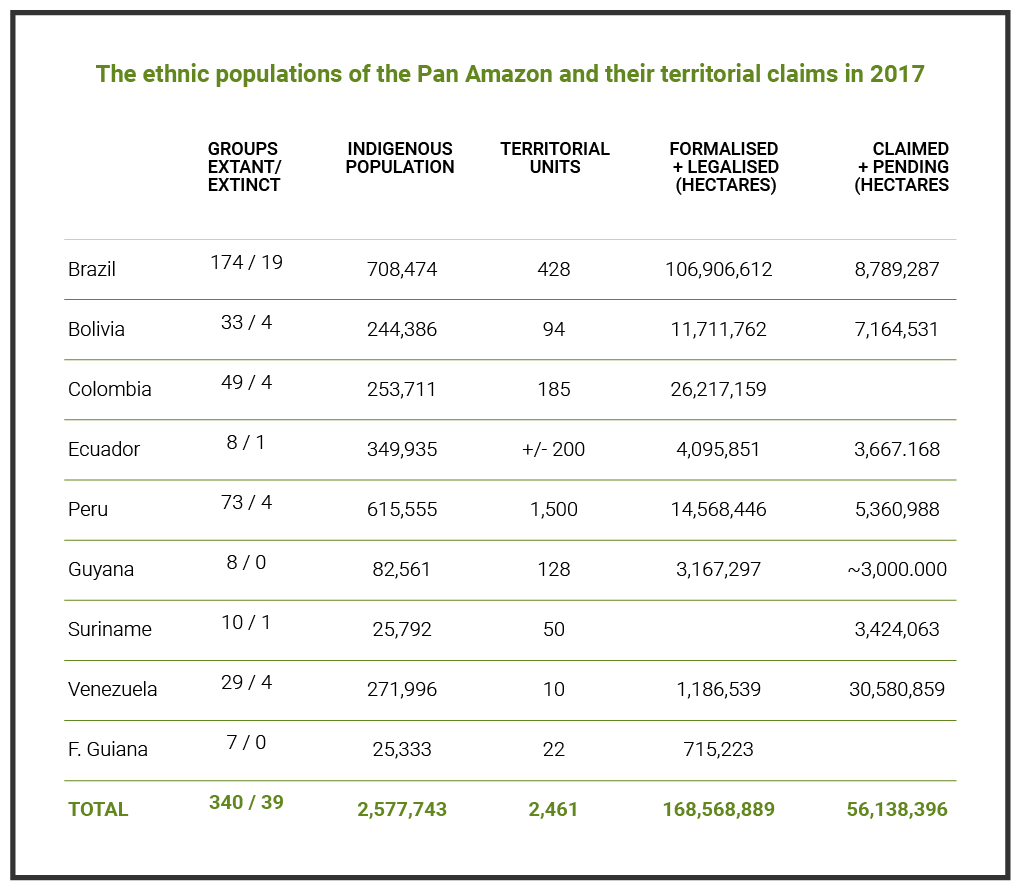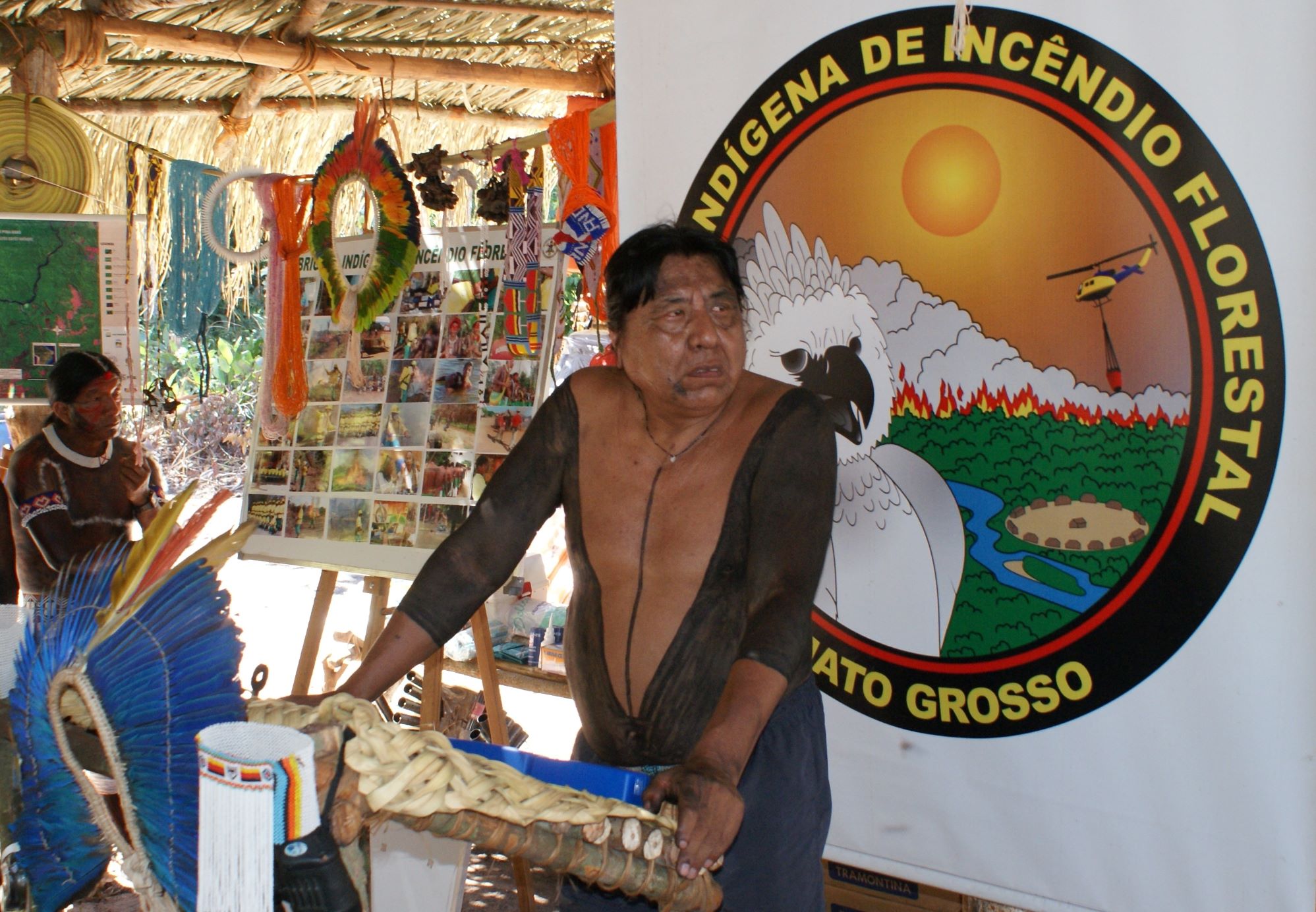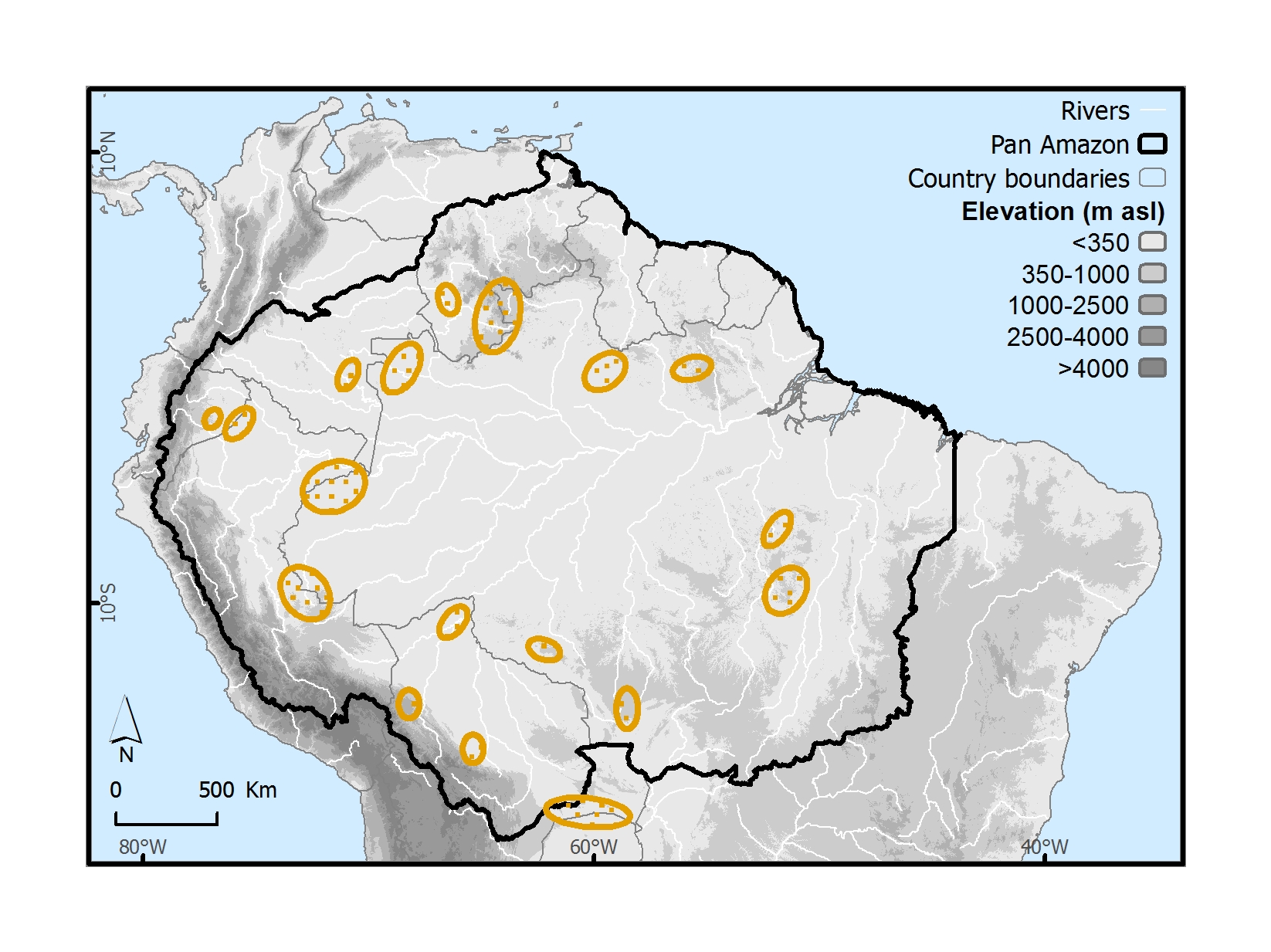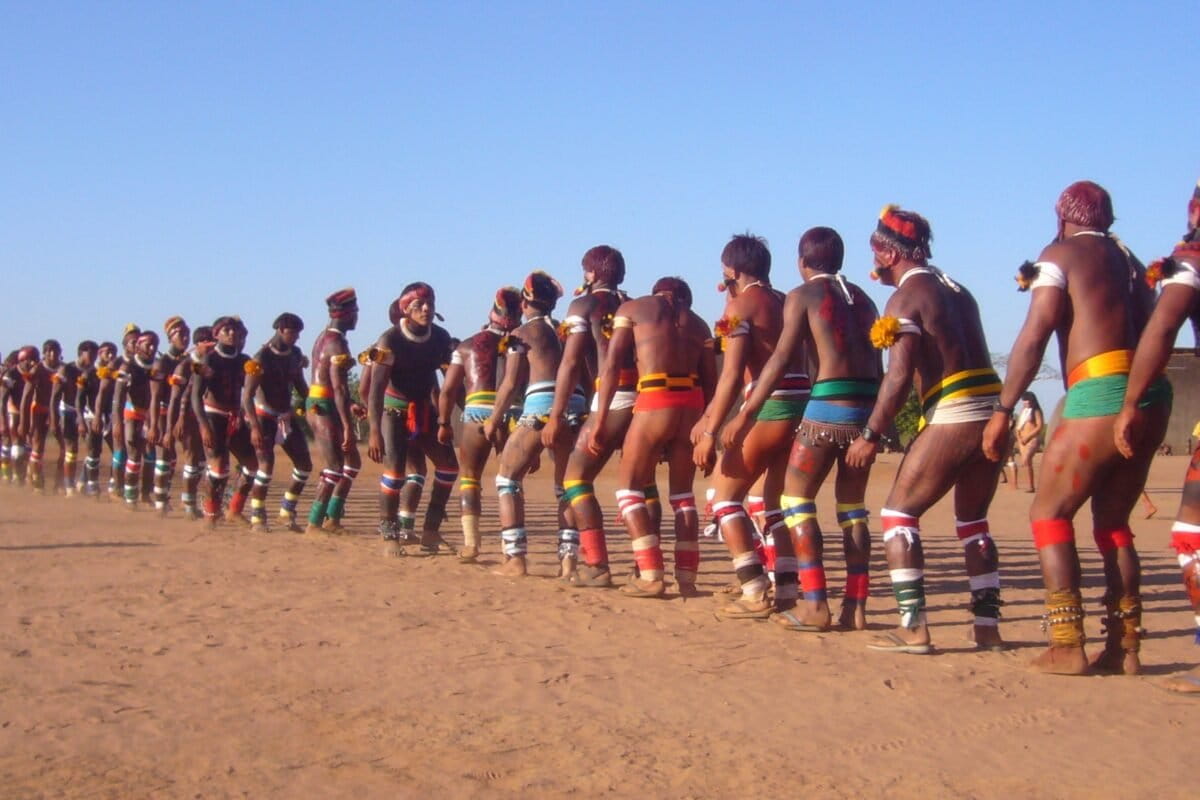- Mongabay is publishing a new edition of the book, “A Perfect Storm in the Amazon,” in short installments and in three languages: Spanish, English and Portuguese.
- Author Timothy J. Killeen is an academic and expert who, since the 1980s, has studied the rainforests of Brazil and Bolivia, where he lived for more than 35 years.
- Chronicling the efforts of nine Amazonian countries to curb deforestation, this edition provides an overview of the topics most relevant to the conservation of the region’s biodiversity, ecosystem services and Indigenous cultures, as well as a description of the conventional and sustainable development models that are vying for space within the regional economy.
- This is part of chapter 1 of “A Perfect Storm in the Amazon,” see the bottom of this page for links to all the excerpts.
The explosive growth of protected area networks was accompanied by the simultaneous recognition of the territorial rights of Indigenous people, an ongoing process that has yet to conclude. There are approximately 2.5 million Indigenous people living in the Pan Amazon; about two-thirds live within their territories, which total between 170 and 220 hundred million hectares. They have occupied and defended these territories for centuries; historically, they used armed resistance, but they now rely on civil disobedience and political activism. Being granted legal title or explicit use-rights to their homeland, however, does not signify an end to conflict.
Indigenous communities must physically protect their land and its resources from timber thieves, gold miners and land grabbers, as well as wage regulatory battles to stop highway construction, petroleum exploration or the development of hydropower infrastructure. Indigenous people are the Amazon’s fiercest and most effective conservation advocates because the struggle for their territories is existential: if they lose their land, they will lose their identity and cease to exist as a people. They know this because they are the survivors of a holocaust.

The Native Americans of the Pan Amazon have survived wave after wave of genocidal events that started with the colonization of the Western Hemisphere by the European powers in the fifteenth and sixteenth centuries. Slavery, war and epidemic disease reduced their populations by an estimated ninety per cent by the mid decades of the nineteenth century. The prosperous communities that once populated the main stem of the Amazon River were not entirely annihilated; their languages disappeared, but survivors were absorbed, along with their knowledge, into the mestizo culture that now occupies the banks of the river.
The ethnic groups that survived with their culture and languages intact did so by retreating to remote territories on upstream tributaries that limited their contact with the agents of Western civilization. Some tribes interacted with missionaries and frontier merchants, participating in the Amazonian economy by trading a diversity of forest products, including gums, resins, fiber, fruits, nuts, wildlife and fish. They were unprepared, however, for the avalanche of invaders who arrived with the onset of the first rubber boom in the last half of the nineteenth century (Chapter 6). The number of dead has never been compiled, but tens of thousands perished from another round of disease and slavery. The surviving tribes moved deeper into the wilderness.

The period between the end of the first rubber boom and the nationalist policies of the 1970s was a time of relative calm. Outsiders continued to seek out Indigenous communities, but they now came with benevolent intentions. Catholic and Protestant missionaries renewed their efforts to bring salvation to so-called heathen populations; their most consequential action was to educate young men, and sometimes women, as part of a deliberate strategy to assimilate ethnic groups into Western society.
The Brazilian government created the Serviço de Proteção ao Índio (SPI), which sought to ‘pacify’ Indigenous groups and integrate them as distinct cultures into Brazilian society. Expeditions and trading stations were manned by sertanistas, many of whom admired ndigenous cultures and sought to protect them from modern society.
A third group of individuals combined both missionary and anthropological approaches: evangelical Christians organized a highly effective effort to preserve Indigenous languages, recognizing their essential role in cultural survival. Ironically, they used that knowledge to translate the bible into native languages and, in the process, attack the spiritual elements at the core of indigenous culture.
All three of these interlopers acted as mentors to Indigenous people as their societies adapted to a changing world in the first half of the twentieth century. Each contributed to the survival of the Indigenous people with whom they interacted; unfortunately, many exchanges triggered another round of epidemic disease. Indigenous people were not passive recipients of their ministrations, however; they absorbed some lessons while ignoring others. More importantly, they retained their own leadership traditions, which they would harness to navigate the next existential threat to their way of life.

The already considerable pace of change was hyper-charged by the tumult of the 1970s and 1980s as immigrants streamed into their territories with government assistance and the explicit intention of stealing their land. Fleeing further into the forest wilderness was no longer an option. They had to organize and fight, or they would perish. Typically, a group of individuals would form an association united by ethnicity and language; not infrequently, they were led by a charismatic individual who had been indoctrinated by a Western mentor. In a remarkably short period of time, individual ethnic associations united to form national federations to represent their interests to government.
This happened independently in Brazil, Bolivia, Colombia, Ecuador and Peru; simultaneously, they organized internationally to create an Amazonian coalition of Indigenous organizations. By design or good fortune, their movement coalesced at a time when these nations were undergoing democratic renewal and constitutional reform. By the end of the 1980s, the Andean republics and Brazil explicitly recognized the rights of Indigenous people to their ancestral territories and some form of autonomous government.
The first Indigenous territory was actually conceived as a national park: Parque Nacional do Xingu was created in 1961 and, at the time, was the largest protected area in Brazil. Its proponents, a trio of brothers who were famous sertanistas, based their ambitious proposal on their observations that Indigenous cultures are inextricably linked to their livelihoods, which are entirely dependent on access to forest and aquatic resources . To protect Indigenous culture, it is necessary to conserve the landscape that supports the livelihood of the entire tribe. The park was declassified as a protected area in 1991 and recognized solely as an Indigenous territory: Parque Indígena do Xingu (PIX).

Prior to its formation, the amount of land deeded to a village or community was calculated based on the area required to support a family using slash and burn technology, rather than the territory needed to pursue a forest livelihood. Another key decision was to include multiple communities in a single reserve, which also increased the size of the protected area. This provision obligated different tribes, many of whom were historically hostile, to collaborate in the administration of their shared territory. The PIX set a precedent in Brazil, but very few Indigenous territories were created during the military government between 1964 and 1985. The recognition of Indigenous territories began in earnest with the constitutional reform of 1988.
The recognition of the territorial rights of Indigenous communities in the Andean republics occurred first in Peru, when a military government initiated an agrarian reform policy in the early 1970s. The Peruvians adopted a community-based model that deeded land to individual villages, rather than a territory-based model that pooled the lands of multiple communities. This policy has created a fragmented land tenure map, which has facilitated the development of energy infrastructure while impeding indigenous organizations’ efforts to limit the expansion of the oil industry in northeast Peru.

In Bolivia, the government of Evo Morales changed the nature of its territorial system, which was originally established using ethnic affinities, to allow new settlements by migrants from Indigenous highland communities. Guyana adopted a community-based approach that limited the forest area ceded to Indigenous tribes while maximizing the forest estate under government control. Suriname has yet to act to create any indigenous territories, in spite of a decision by the Interamerican Court of Human Rights in favor of the two largest groups, who petitioned the court to seek restitution for environmental impacts linked to the bauxite industry. Venezuela has recognized the rights of Indigenous people in some protected areas but has yet to act on the territorial claims of its very sizable Indigenous population.
Although Peru relies heavily on the community-based model for allocating land to ethnic groups engaged with modern society, it has deployed the territory-based model to protect Indigenous groups who are in voluntary isolation. Previously referred to as ‘uncontacted’ Indigenous groups, these small bands are known to exist in Brazil, Bolivia, Colombia, Ecuador and Venezuela. Estimates vary, but there are probably less than 10,000 individuals living in about sixty bands in the most remote corners of the region. These are among the most vulnerable groups within the Amazon because they are susceptible to common diseases and have not acquired the social skills to protect themselves from the vagaries of life that are an integral part of modern society.

The people living in voluntary isolation are not the only vulnerable cultures in the Amazon. Approximately ten per cent of the ethnic groups in the Amazon have become extinct since anthropologists compiled a (more or less complete) list in the first half of the twentieth century. Cultural extinction is a forgone conclusion for forty groups with populations of less than 100 individuals, and the future is only marginally better for another 82 tribes with fewer than 500 souls, particularly if they have not retained the use of their language.
Overall, however, Indigenous populations have approximately quadrupled since the 1970s, a positive sign that their health and welfare has improved in parallel with efforts to secure their lands. Most of that growth has occurred within the fifty largest ethnic groups, who have been most successful in protecting their rights and prerogatives.
These numbers underestimate the actual Indigenous population because of migration to urban centers by youth. Urban populations are both an opportunity and risk for Indigenous people. If they retain their Indigenous identity, urban populations can act as a conduit for information, technology, education and financial resources. Unfortunately, history has shown that it is more likely they will lose their language and adopt the cultural identity of the far more numerous mestizo population.
The revitalization of Indigenous communities has paid monumental dividends for Amazonian society. Their commitment to biodiversity conservation ensures their territories will be managed as sustainable use reserves, and most adhere to management criteria similar to the most restrictive type of protected area. Their commitment is hard-wired into their culture, reinforced by recent history and the bitter struggle to defend their lands. They are quite literally conservation warriors.
“A Perfect Storm in the Amazon” is a book by Timothy Killeen and contains the author’s viewpoints and analysis. The second edition was published by The White Horse in 2021, under the terms of a Creative Commons license (CC BY 4.0 license).
Read the other excerpted portions of chapter 1 here:
 Chapter 1. The state of the Amazon
Chapter 1. The state of the Amazon
- The state of the Amazon May 31, 2023
- Drivers of environmental degradation in the Amazon June 1, 2023
- The geography of environmental degradation in the Amazon June 7, 2023
- The political economy of the Pan Amazon June 8, 2023
- Understanding the conventional economy of the Pan Amazon June 13, 2023
- The natural history of the Amazon Rainforest June 14, 2023
- Forest ecology and carbon dynamics in the Amazon June 20, 2023
- Climate change and moisture recycling in the Amazon June 22, 2023
- Environmental policy and action on the ground in the Amazon June 27, 2023
- Environmental governance in the Amazon June 28,2023
- The largest land set-aside in history June 29, 2023
- An Indigenous revival in the Pan Amazon July 6,2023
- Monetizing nature: The under-explored power of the Amazon’s natural capital July 7, 2023
- The challenge of the future (and lessons from the recent past) in the Pan Amazon July 12, 2023
- Current policy approaches in the Amazon: certainly necessary, but are they sufficient? July 13, 2023
